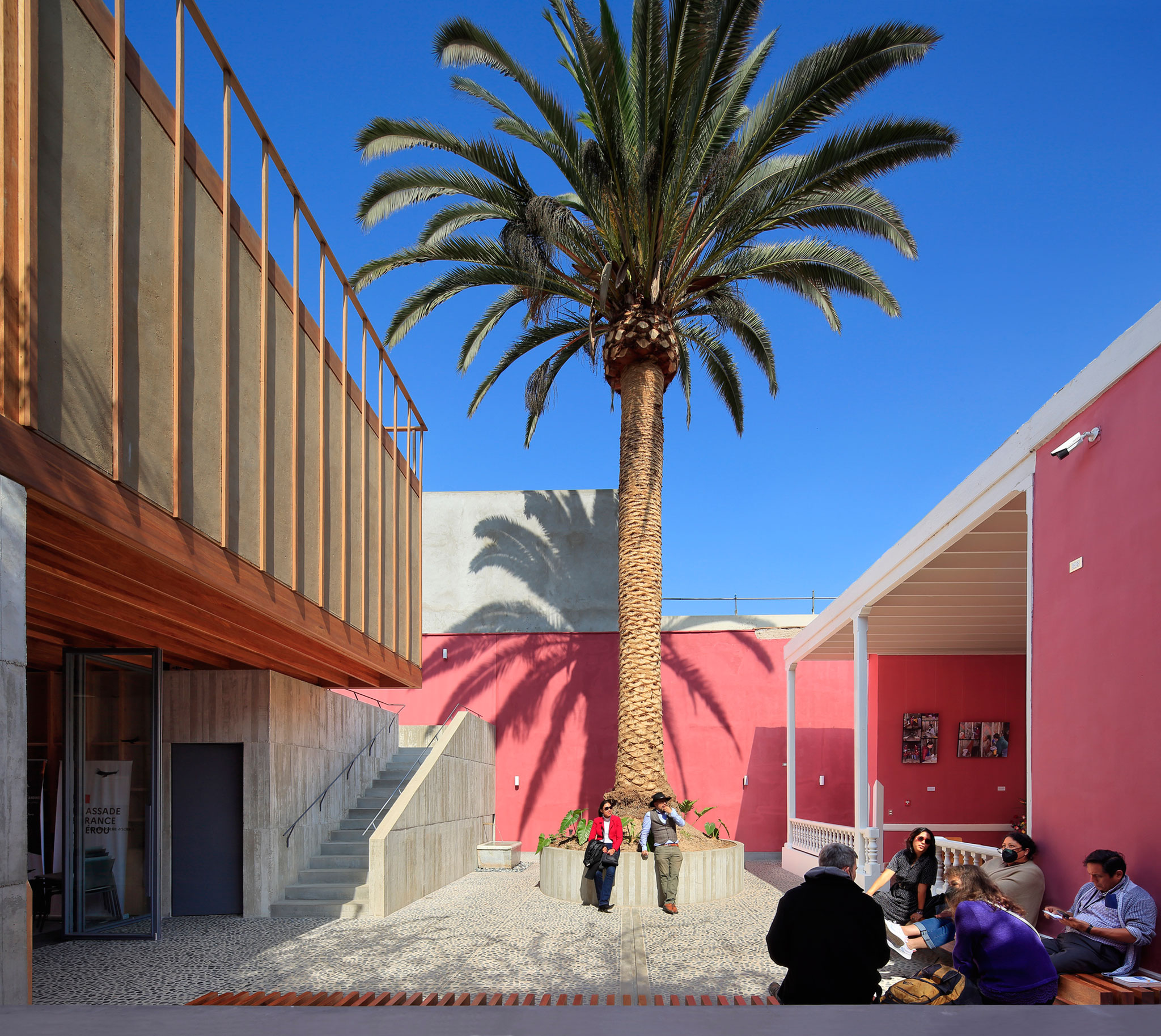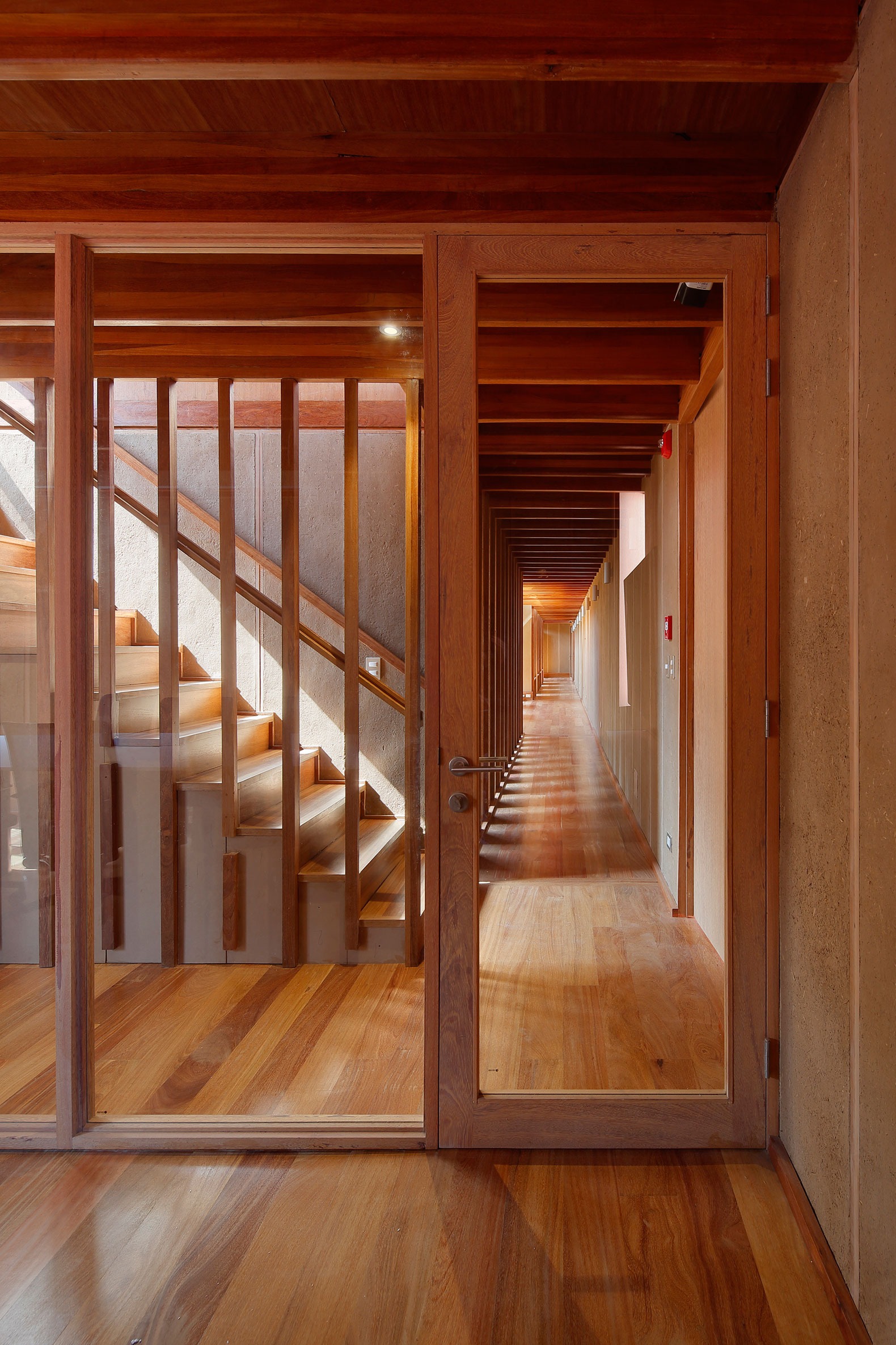
To revalue the construction traditions of the context, the architects José Bauer Silva, Augusto Román Moncagatta and Enrique Santillana Ciriani have used construction techniques such as quincha or teatinas for the construction of the project.
The quincha, a wooden framework with cane weave and mud and straw plaster, reduces the structures and improves the bioclimatic behaviour of the building. The teatinas, bioclimatic devices characteristic of Lima, illuminate the interior spaces from above, as well as generating cross ventilation, solving the interior climate comfort.
Structurally, laminated wood beams made by hand are used. Craftsmanship plays a major role in the project, using qualified labour, which is reflected in the cobblestone pavements.

French Institute of Andean Studies by José Bauer Silva, Augusto Román Moncagatta, Enrique Santillana Ciriani. Photograph by Juan Solano.
Descripción del proyecto por José Bauer Silva, Augusto Román Moncagatta y Enrique Santillana Ciriani
The French Institute of Andean Studies in Lima is located in the historic centre of Barranco, at the back of the grounds of a heritage mansion. The project avoids typological mimesis of the context and concentrates on revaluing the construction traditions that constituted that context, now in disuse, and which are very relevant to the coastal territory of Peru, in bioclimatic, earthquake-resistant and environmental terms.
Firstly, quincha, a wall traditionally used on second floors, consists of a wooden framework with cane weave and mud and straw plaster. Unlike other world versions of this material (bareque, bahareque, wattle and daub), this earthquake-resistant version appeared in Lima in the 17th century and offers great ductility and lightness in the face of earthquakes. Incorporating new research on this material, an even lighter version was used in the project, reducing the structures and improving its bioclimatic behaviour. The usual accumulative capacity of the thermal mass of clay and its hygroscopicity are complemented by the insulating capacity of straw.

The teatinas, bioclimatic devices that emerged in Lima during the viceroyalty, serve to illuminate from above, taking advantage of the diffuse light of Lima and to catch the wind coming from the south. In this version, they are used both to catch and to extract the air from the rooms, generating controlled cross ventilation, which resolves the climatic comfort inside when the temperature rises in summer. Small hatches in each office allow a personalized regulation of the ventilation level, increasing the feeling of control over the situation.
By insisting on the reuse of these traditions, the built heritage is revalued, but also the techniques and materials that made it possible. The knowledge behind the buildings that we preserve is valued, susceptible to further improvement, so as not to fall into a static and inert vision of the heritage.
The structure is based on hand-laminated wooden beams to achieve minimum tree waste and better control of the moisture content of the wood, which is kiln-dried into small slats with lower energy consumption. Taking the load-bearing sections to the limit, in some cases these beams are tensioned with steel cables.

Circular economy criteria were put into practice by reusing the soil itself for the plastering, or the wood from the pre-existing huts for the formwork and benches. The project is committed to the use of qualified labour, sometimes bordering on craftsmanship, as in the case of the cobblestone pavement, typical of the Lima alluvial cone subsoil. The project does not renounce the use of more technical processes such as numerical control cutting to die-cut a text in Morse code on the acoustic absorption walls of the library.
The aim is to achieve a contemporaneity that can provide continuity and improvement to the constructive knowledge relevant to each region, validated by the experience of several generations and which was suddenly replaced by illusions of progress.




























































